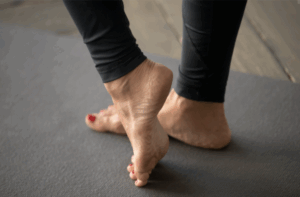
Healthy legs start with healthy veins—and one of the most effective ways to support your vein health is through regular exercise. Whether you’re managing chronic venous insufficiency, looking to prevent varicose veins, or simply aiming to improve overall circulation, staying active is key. It is important to note that sometimes venous disease is hereditary and unavoidable; however, maintaining an active lifestyle can lessen the symptoms of venous disease.
At the Vein Institute of Pittsburgh, we specialize in the diagnosis and treatment of vein disorders, but we also believe in the power of prevention. Exercise plays a critical role in promoting strong, resilient veins and improving blood flow in the lower body. Below, we’ll walk you through the best exercises for leg vein health and explain why movement matters more than you might think.
Why Exercise Matters for Your Veins
Your veins are responsible for returning blood to the heart—and that’s no small job, especially from your lower body. When you sit or stand for long periods, blood can pool in your legs and increase pressure on your veins. Over time, this can weaken vein walls and valves, leading to varicose veins or other vein-related issues.
Exercise helps prevent this by:
- Improving circulation and encouraging blood flow upward.
- Strengthening calf muscles, which act as a natural “pump” for your veins.
- Reducing venous pressure and swelling.
- Promoting weight control, which eases strain on your veins.
Top Exercises to Support Leg Vein Health
You don’t need to become a marathon runner to protect your veins. Low-impact, circulation-boosting movements done regularly are often the most beneficial. Here are our top picks:
1. Walking
One of the easiest and most effective exercises, walking activates your calf muscles and gets blood flowing. Aim for at least 30 minutes a day, five times a week. Even short walks throughout the day—like pacing while on the phone—can help.
2. Swimming
Swimming is gentle on joints and provides excellent resistance to improve circulation without putting strain on your legs. The horizontal position also naturally helps blood return to your heart more efficiently.
3. Cycling or Stationary Biking
Pedaling works your leg muscles and keeps blood moving. Whether you’re outside or on a stationary bike, cycling is an ideal way to boost lower-body circulation while reducing the risk of vein issues.
4. Leg Lifts
Simple leg lifts can be done lying on your back or standing. They strengthen your core and lower body while helping with blood flow:
- Lie down with one leg straight and the other bent. Slowly lift the straight leg to a 45-degree angle, hold, and lower. Repeat 10–15 times on each side.
5. Calf Raises
Calf muscles are your veins’ best friends. Strengthening them improves venous return:
- Stand with your feet hip-width apart. Slowly raise your heels off the floor, hold for a few seconds, then lower. Repeat 15–20 times.
6. Ankle Pumps and Rotations
If you’re seated for long periods, ankle movements are a great way to keep blood flowing:
- Flex and point your toes.
- Roll your ankles in circles. Try sets of 10 every hour, especially during travel or desk work.
7. Yoga
Certain yoga poses—like Legs Up the Wall, Downward Dog, and Chair Pose—are excellent for boosting circulation and reducing pressure in the legs. Yoga also improves flexibility and promotes overall vascular health.
Tips for Exercising Safely with Vein Concerns
If you already have varicose veins or another venous condition, keep these tips in mind:
- Wear compression stockings if recommended. They can enhance circulation during activity.
- Avoid high-impact activities like running or heavy weightlifting if you experience pain or swelling.
- Stay hydrated to support circulation and muscle function.
- Listen to your body. If you experience cramping, heaviness, or discomfort, stop and speak to your vein specialist.
What If Exercise Isn’t Enough?
While exercise can prevent or reduce symptoms, it may not reverse existing vein problems. If you’re dealing with leg swelling, visible varicose veins, aching, or fatigue, medical treatment may be necessary. At the Vein Institute of Pittsburgh, we offer non-invasive and minimally invasive treatment options that are safe, effective, and customized to your needs.
From ultrasound evaluations to laser vein removal ablation and sclerotherapy, we’re here to help you look and feel your best—starting with healthy legs.
Let’s Take the Next Step Together
Your legs work hard every day—make sure your veins are up for the task. With the right exercise routine and professional guidance, you can improve circulation, reduce discomfort, and prevent future issues.
If you have questions about your vein health or want a professional assessment, contact the Vein Institute of Pittsburgh today. Our board-certified experts are here to help you move with comfort and confidence.
